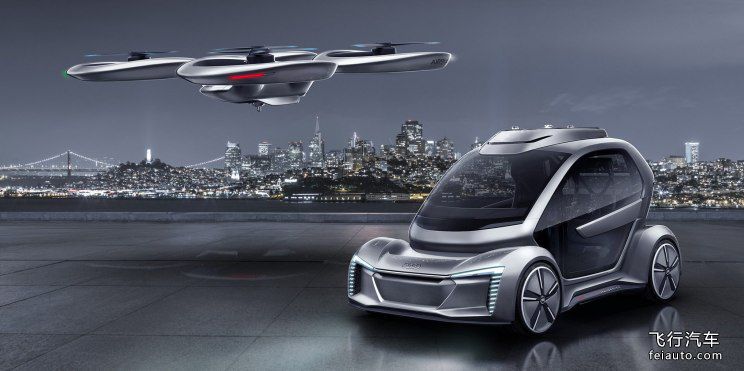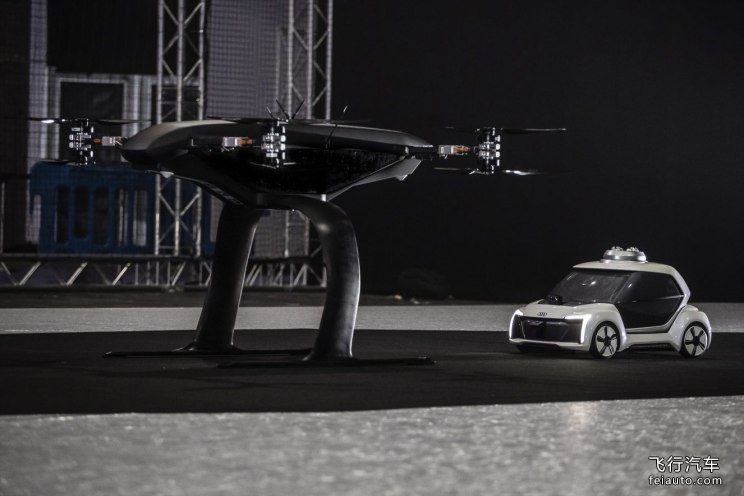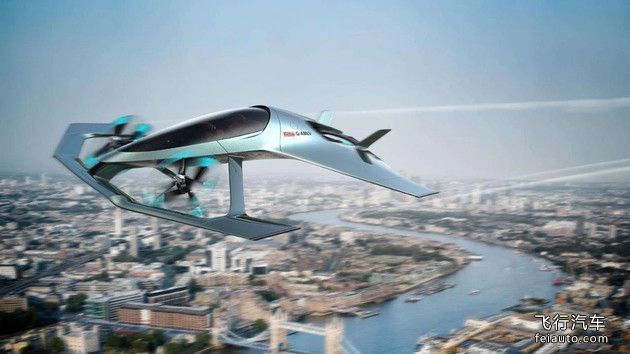快报
影响飞行汽车成为现实的技术难关及人文因素
发表时间:2019-01-31 19:08:14 作者:飞行汽车 点击:
但在这成为现实之前,还需要一些技术创新。这并不是指实现飞行汽车的技术,而是为了减轻客户和监管机构的担忧的安全技术创新问题,并降低使之成为大众交通工具的成本,进而引爆这个行业。

直升机制造商贝尔(Bell)负责创新的副总裁Scott Drennan说,最重要、或许也是最大的挑战是自动化。在2019年国际消费电子展上,该公司推出了Nexus空中出租车,它使用6个平铺式转子垂直推动自己飞离地面。Nexus有五个座位,包括一名飞行员,但它是为自动飞行设计的。2017年,贝尔与优步合作,后者希望有人为Uber Air生产飞行汽车。Drennan说,为了让这项服务的价格变得合理,他们的空中出租车必须是自动驾驶的,这样就不用支付飞行员的费用。据《航空安全杂志》(Aviation Safety magazine)报道,从理论上讲,自动驾驶的空中出租车也会比人类驾驶的出租车更安全,从而消除了人为失误的可能性。
卡内基梅隆大学机器人研究教授Singh在其职业生涯的头几年致力于自动驾驶汽车,或者用他的话说,“这些移动机器人太笨重了”。这些又大又笨重的机器更适合在露天矿场里穿行,而不是在帕洛阿尔托的街道上穿行。但Singh自上世纪80年代开始研究自动驾驶汽车以来所取得的进展,为自动驾驶私人飞机提供了一个模型。自动驾驶汽车曾经纯粹停留在理论上,但现在它们开始变为现实,有些甚至在公路上测试了几千个小时。民众目前还没有失去他们的新奇感——亚利桑那州钱德勒市持刀居民的袭击清楚地表明了这一点——但许多人现在可以看到曾经被认为荒谬的事情:自动驾驶汽车很快就会满街跑。
自动驾驶汽车和自动驾驶飞机不可一概而论。飞行汽车不需要像路面上驾驶汽车的精准程度,不必为框框线线所阻碍。但是,如果一辆在地面上行驶的自动汽车遇到紧急情况,你可以靠边停车。但对于飞行汽车来说,你可能面临着从天上掉下来的风险。随着自动飞行系统的出现,未来的飞行汽车将需要靠电池来驱动。但这种电池“并不存在”,优步储能系统工程总监Celina Mikolajczak在去年的一次国际电池会议上说。从特斯拉挖来的Mikolajczak花了数年时间测试和提炼用于电动汽车的电池。

对于特斯拉汽车来说,Mikolajczak并不太担心电池的重量。但如果应用到飞行汽车上,这就很重要。为电动垂直起降飞行器造合适的电池的关键是增加电池的能量密度,即使电池处于最佳状态,也远远落后于喷气燃料。据估计,喷气燃料每磅产生的能量是电池的14倍。但这种差距正在缩小。目前的创新速度使电池密度每年提高约5%。保守地说,这意味着从郊区到市中心的通勤者所需的电池将在本世纪中叶出现。
尽管这些技术障碍看起来很困难,但人类自身的障碍可能更令人烦恼。主要的问题仍然是如何允许飞行的出租车在空中运行。会发展什么样的航空交通管制系统?美国联邦航空管理局(FAA)会在多快的时间内允许无人机自主飞行?每家航空出租车公司是否会建立自己的基础设施,包括充电站和垂直升降机场?然后是噪音。Singh说:“这是一个物理问题。”使用哪种模式并不重要;重要的是它们制造很多噪音。他说,如果人们想要这些车提供的便利,他们就必须接受通勤者嗡嗡地从他们楼上窗户前经过的烦恼。
这种接受可能来之不易。自动驾驶汽车已经上路多年,测试里程已达数百万英里,但许多人仍对其持怀疑态度。想象一下,在第一架自动驾驶飞机坠毁后,人类会产生怎样的恐惧心理。
Drennan说:“当我们驾驶这些飞行器时,我们希望成为一个伟大的邻居。”这不仅是贝尔直升机公司的关键,也是整个行业的关键。人们对飞行汽车的期待可能已经有几十年了,但当这项技术到来时,他们是否已经准备好接受它呢?Singh说,这一进程将得益于提高透明度。“我们将开始看到人们进行测试,我们将开始看到人们建立良好的流程,”他说。“这是我们前进的方向。在等待了100多年的飞行汽车之后,我们并不想匆忙行事。”
英文版
English version
But before this becomes a reality, some technological innovation is needed. This is not about the technology of flying cars, but to alleviate the concerns of customers and regulators about safety technological innovation, and to reduce the cost of making it a mass transit vehicle, thereby detonating the industry.
Scott Drennan, vice president of innovation at helicopter manufacturer Bell, says automation is the most important and perhaps the biggest challenge. At the International Consumer Electronics Show in 2019, the company launched the Nexus Air Taxi, which uses six flat rotors to propel itself vertically off the ground. Nexus has five seats, including a pilot, but it is designed for automatic flight. In 2017, Bell partnered with Ubuntu, which wants to produce flying cars for Uber Air. Drennan said that in order to make the price of the service reasonable, their air taxi must be self-driving, so that pilots do not have to pay for it. According to Aviation Safety magazine, in theory, autonomous taxis are also safer than human-driven taxis, eliminating the possibility of human error.
Singh, a professor of robotics at Carnegie Mellon University, dedicated himself to driving cars in the first few years of his career, or in his words, "these mobile robots are too heavy" These large and bulky machines are better suited for traveling in open pits than in the streets of Palo Alto. But Singh has made progress since the 80s of last century to study autopilot, providing a model for autopilot private aircraft. Autopilot cars have been purely theoretical, but now they are beginning to become reality, and some have even tested thousands of hours on highways. The public has not lost their novelty at the moment - the attack by knife holders in Arizona, Chandler, clearly shows this point - but many people can now see what was once regarded as absurd: autopilot cars will soon run all over the street.

Self driving cars and autopilot aircraft can not be generalized. Flying cars do not need to be as precise as driving cars on the road, and do not need to be hindered by frame lines. But if an automobile is running on the ground in an emergency, you can pull over. But for flying cars, you may face the risk of falling from the sky. With the advent of automatic flight systems, future flying vehicles will need to be powered by batteries. But such batteries "don't exist," Celina Mikolajczak, director of energy storage systems engineering at UBS, said at an international battery conference last year. Mikolajczak, dug up from Tesla, spent years testing and refining batteries for electric vehicles.
For Tesla cars, Mikolajczak doesn't worry too much about the weight of batteries. But if applied to flying cars, this is very important. The key to making suitable batteries for electric vertical takeoff and landing vehicles is to increase the energy density of batteries, which are far behind jet fuel even when the batteries are in the best state. Jet fuels are estimated to generate 14 times as much energy per pound as batteries. But the gap is narrowing. The current rate of innovation has increased battery density by about 5% annually. Conservatively, this means that the batteries needed by commuters from the suburbs to the city centre will emerge in the middle of this century.
Although these technical barriers may seem difficult, the human barrier itself may be even more troubling. The main problem remains how to allow flying taxis to operate in the air. What kind of air traffic control system will be developed? How soon will the Federal Aviation Administration (FAA) allow UAVs to fly autonomously? Will each taxi company build its own infrastructure, including charging stations and vertical lifting airports? Then noise. "It's a physical problem," Singh said. It doesn't matter which mode you use; it's important that they make a lot of noise. If people want the convenience of these cars, they have to accept the annoyance of commuters humming past their upstairs windows, he said.

This acceptance may not come easily. Self driving cars have been on the road for many years, and the mileage has reached millions of miles, but many people still doubt it. Imagine what kind of fear humans would have after the crash of the first autonomous aircraft.
"When we drive these aircraft, we want to be a great neighbor," Drennan said. This is not only the key of Bell Helicopter Company, but also the key of the whole industry. People may have been expecting flying cars for decades, but when this technology arrives, are they ready to accept it? Singh said the process would benefit from greater transparency. "We're going to start seeing people test, and we're going to start seeing people build good processes," he said. "This is our way forward. After waiting for more than 100 years for flying cars, we don't want to rush.
【版权声明】以上内容来源于网络转载,出于传递信息及学习之目的,不代表本网站的观点、立场,本网站不对其真实性负责。未经原作者feiauto允许不得转载本文内容,否则将视为侵权,本站依法保留追究权!www.feiauto.com
【投稿】请把所需要提交的文章投稿至此邮箱:feiauto@126.com




